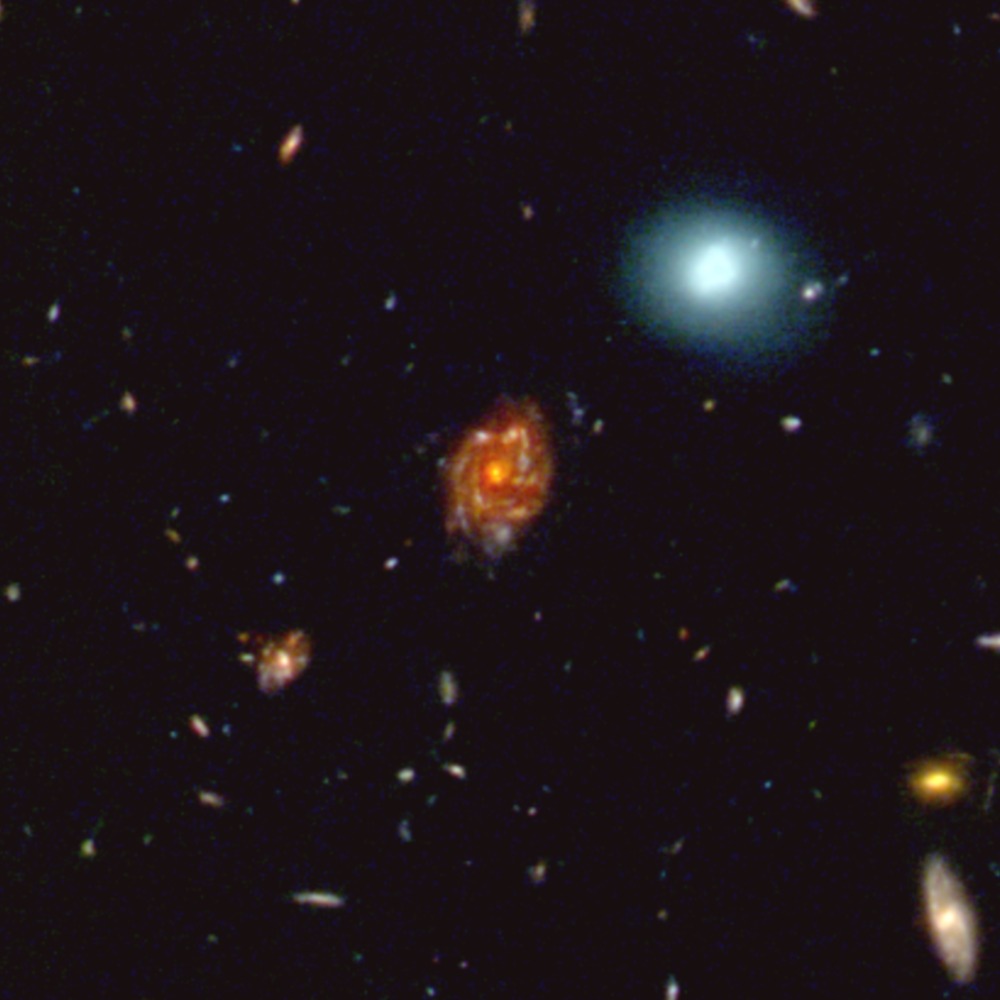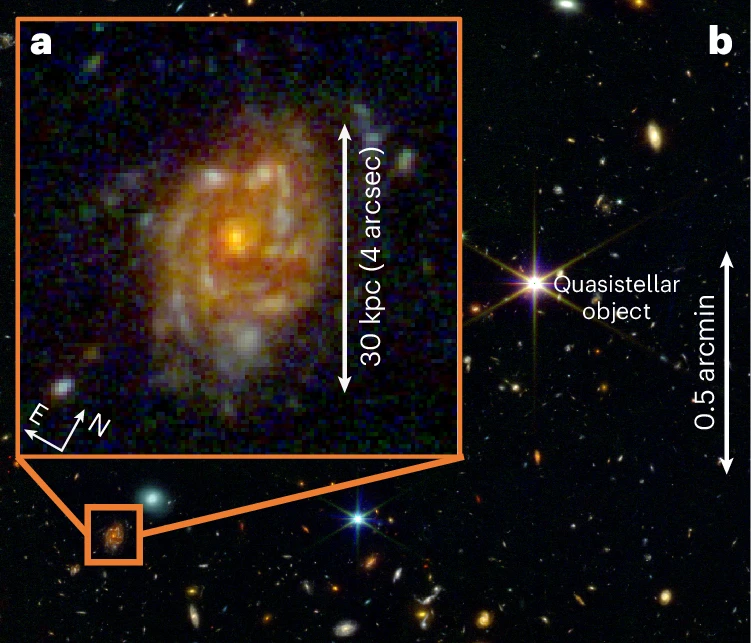Thanks to the power of the James Webb Space Telescope, astronomers have discovered an impressive giant galaxy that existed just 2 billion years after the Big Bang. This structure, called the Big Wheel, has a distinct orange-colored spiral disk and challenges current models of galaxy formation.

The study, published in Nature Astronomy, describes it as an object that rivals the size and mass of modern galaxies, particularly the Milky Way.
Chance of 2%
The Big Wheel is about 98,000 light-years in diameter — almost as big as the Milky Way. However, its existence in the early Universe about 12 billion years ago came as a surprise. “The chances of detecting such an object were less than 2%,” noted astrophysicist Themiya Nanayakkara.

The galaxy is located in an extremely dense region where mergers between such objects are frequent. This environment probably accelerated its evolution, allowing it to accumulate mass and form a spiral structure.
Key to the past
The stellar disk of the Big Wheel is surrounded by numerous satellite galaxies. This concentration indicates that the object may be the germ of a future giant cluster. At the same time, its location in a high-density region offers a unique chance to study how interactions between galaxies affect their shape and evolution.
Before the James Webb Telescope, astronomers believed that such massive disk galaxies could not have formed so early. The Big Wheel proves the opposite, and also points to the possibility of other similar structures in earlier epochs. Further observations should answer the question: was this galaxy a unique “random” object or part of a larger cosmic mosaic that we have not yet discerned?
Scale of the Universe
The discovery was made possible by JWST’s sensitive infrared instruments, which can look through dust and capture the light of ancient objects. On the images, the Big Wheel appears as a bright disk, while the neighboring blue galaxy (in the top corner) is 50 times closer to us. This contrast emphasizes the incredible scale of the cosmos.
Now scientists are planning new research to find out whether the Big Wheel is an exception or part of a new chapter in the history of the Universe.
We previously reported on how the source of the first light in dark space was found.
According to theconversation.com


